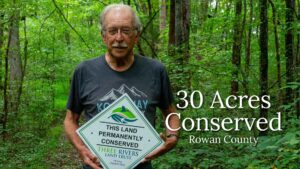
by Crystal Cockman
July 15 ,2016
 Bernie Krause is one of the world’s leading experts in natural sound and has spent countless hours recording natural soundscapes across the world. In his book, The Great Animal Orchestra – Finding the Origins of Music in the World’s Wild Places he describes some of his experiences and the negative impacts that human activity and noise can have on the animal world.
Bernie Krause is one of the world’s leading experts in natural sound and has spent countless hours recording natural soundscapes across the world. In his book, The Great Animal Orchestra – Finding the Origins of Music in the World’s Wild Places he describes some of his experiences and the negative impacts that human activity and noise can have on the animal world.
What is a soundscape? It refers to “all of the sound that reaches our ears in a given moment,” and the term is credited to Murray Schafer. Krause states, “Natural soundscapes, in particular, are the voices of whole ecological systems.” Many things affect sound, including geography, elevation, time of year, and vegetation. According to Krause, even time of day can affect sound. He says “nighttime imparts the sense of a resplendent echoey theater – a beneficial effect for nocturnal terrestrial creatures whose voices need to carry over great distances. Coyotes and wolves likely choose nighttime to vocalize because their sound signatures resonate and travel so well.” Even season of the year can affect animal sounds, as Krause states, “The elk that live in the American West rut in the fall and often use the more pronounced echo of the forest environment during that season to project their modulated bellows, extending the illusion of their territory and securing their harems.”
Krause talks about geophony, which are natural sounds from nonbiological sources such as wind, water, and rain; and biophony, which is the sound of living organisms. Krause makes the point that the biophony gives us valuable information about the health of a habitat.
Krause describes recording audio in a forest management area in the Sierra Nevada Mountains where a logging company obtained a lease permit to selectively log on public forest land – an area he calls the Lincoln Meadow at Yuba pass, east of San Francisco. He went before the logging occurred and recorded the sounds of Williamson’s sapsuckers, mountain quail, chipping sparrows, white-crowned sparrows, Lincoln’s sparrows, ruby-crowned kinglets, and numerous insects. See Figure 1 for a visual representation of all the sounds heard.
 A year later after the logging operation was complete he went back to the same location on the same date, the same
A year later after the logging operation was complete he went back to the same location on the same date, the same
time, under the same weather conditions and recorded sound again. The “once sonorous voice of the meadow had vanished.” The only sounds he heard then were a stream and the hammering of a Williamson’s sapsucker. More trees had been taken than were promised. Even though the location looked much the same as it had before, back from the meadow’s edge much of the forest was gone. Krause makes the point that to the human eye the site appears wild and unchanged, but the sound recording presents a different story. (See Figures 1 and 2).
Krause also found in his work that “creatures vocalize in distinctive kinship to one another, particularly in older, more stable habitats.” He states that “The combined biological sounds in many habitats do not happen arbitrarily: each resident species acquires its own preferred sonic bandwith.” This is what he calls the “niche hypothesis” – which basically means that different animals have a frequency and temporal niche on specific bands of the spectrum while other animals occupy other bands, so there are fewer chances of overlap and masking. He says “Animal voices in many habitats have evolved so that they can stay off the acoustic turf of others.” See figure 7.
Anthrophony, or human generated sound, can interfere with animal sound and behavior. Krause talks about “chorusing” or making sounds all in a chorus like the way many frogs and toads do, and states that when they are all vocalizing together it is harder for predators to single out individuals, so this is a behavior evolved to avoid predation. Human generated noise can effect these animal behaviors. Krause describes hearing a multiengine plane flying over him in the Amazon, and the roar being so loud it masked the chorus of birds and insects. Some stopped singing entirely and others altered their songs, which could open them up to opportunistic predators such as hawks.
Although many of the wild sites that Krause recorded in have been compromised or vanished entirely, there is still hope for tranquil places where man-made sounds are not found. Krause comments on the theories of the ecologist Paul Shepard, who suggests that “a live connection to the natural soundscapes of the world remains vital to our emotional, spiritual, and physical well-being.” Krause states that “stress and fatigue are measurable side effects of constant engagement with our technologies.” He goes on further to say that “Where biophonies and geophonies still exist unimpaired by human noise, we find places of awesome revitalization and inspiration.” He believes that there is a direct connection between natural sounds and the evolution of human music, dance, and even language. Preserving those wild places where natural sound still exists is important for us as much as for the creatures found there.